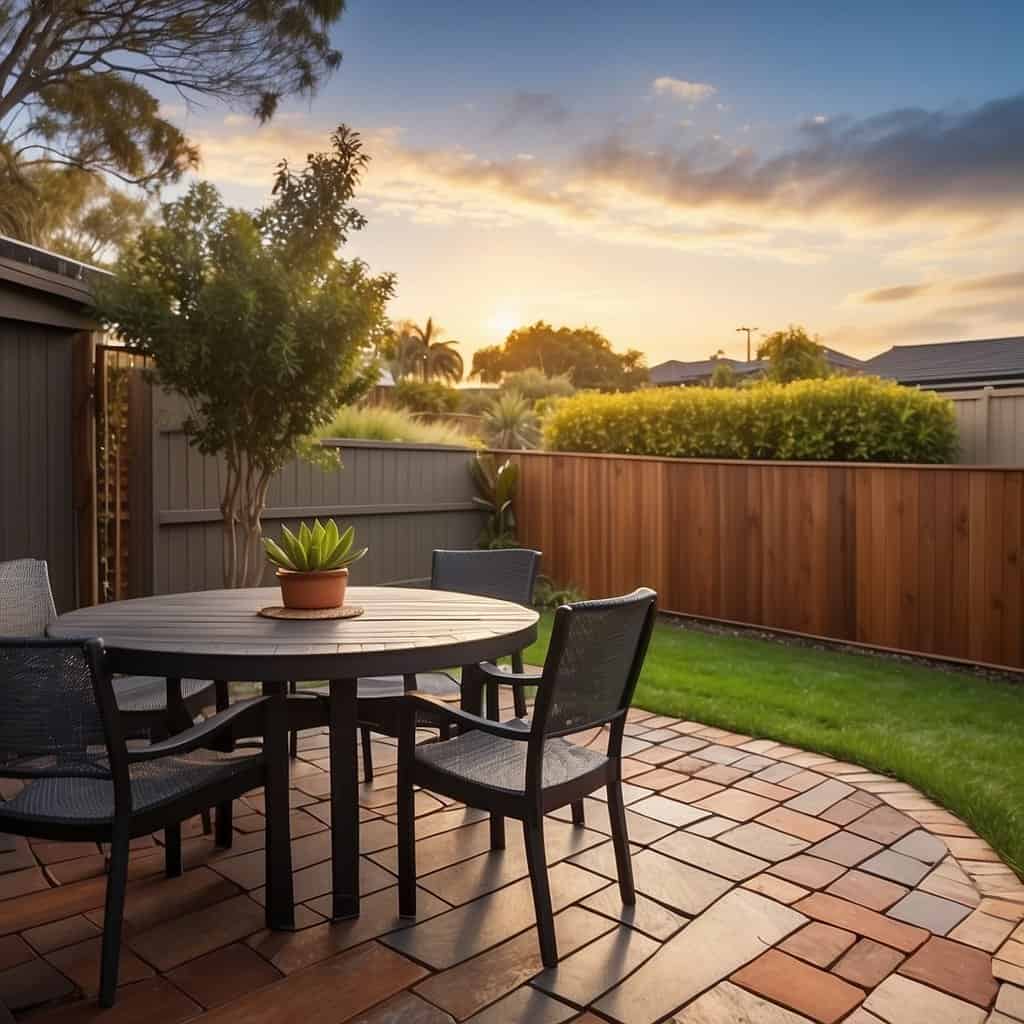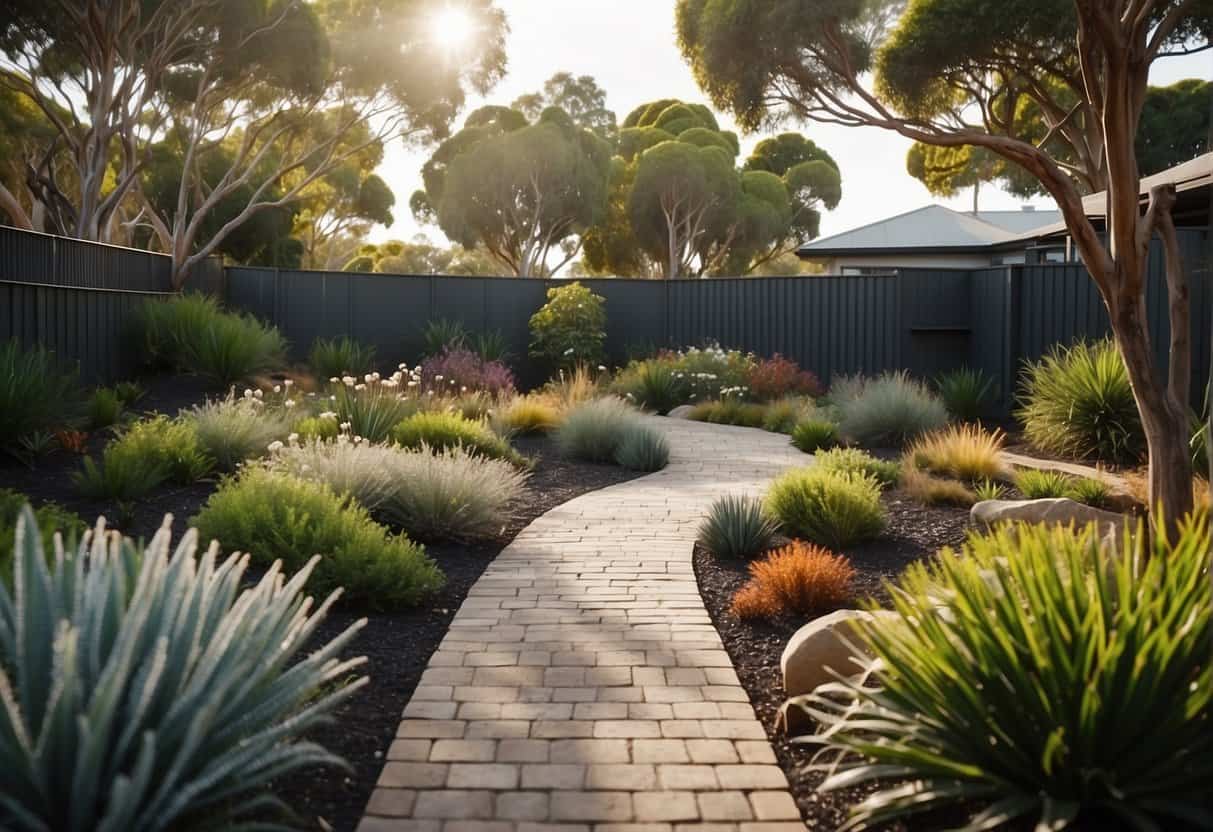Imagine sipping your morning coffee in a garden that looks after itself, where weekends are reserved for relaxation, not endless yard work. It’s not just a dream! With a little ingenuity and the right approach, creating a lush, self-sustaining yard can be your reality.
The secret? A garden designed to thrive with minimal effort from you. From the strategic use of durable perennial plants to a lawn that practically waters itself, you can streamline your garden maintenance without compromising on aesthetics.
Ready to transform your outdoor space into a low-maintenance sanctuary? Let’s explore how to make your garden a place of beauty and relaxation, not just another task on your to-do list.
Understanding Low-Maintenance Lawns
Creating a lawn that looks after itself might seem like a dream, but with the right know-how, it’s entirely doable. Low-maintenance lawns are all about choosing strategies that require less work for you, leaving you more time to enjoy your backyard rather than labour in it. These kinds of lawns significantly reduce the need for watering, mowing, and fertilising.
Key features of low-maintenance lawns:
- Less watering: By selecting drought-resistant plants or grass species, you’ll minimise the need for frequent watering.
- Reduced mowing: Opt for slow-growing grass types that demand less of your time and energy.
- Minimised lawn area: Replacing high-maintenance grass with low-maintenance garden beds, shrubs or outdoor living spaces can significantly cut down on your lawn care chores.
- Automated lawn care systems: From programmable irrigation systems to robotic lawn mowers, automating tasks that used to be on your to-do list saves you the hassle.
Choosing the Right Grass Species
Before diving into your lawn project, it’s key to understand that the right grass species can make or break your garden’s success. You’ll want to consider climate adaptability, maintenance levels, and the practicality of actual grass vs artificial turf.
Evaluating Climate and Soil Type
Your lawn’s ability to thrive depends greatly on matching grass species to your local climate and soil conditions. Cool-season grasses such as Tall Fescue excel in areas with cold winters and mild summers. They’re also known for deep root systems, which contribute to both drought resistance and temperature resilience.
In contrast, warm-season grasses often withstand heat better and are suited to warmer regions. Before deciding, have your soil tested for pH level and composition – this will guide you in choosing a grass that’s compatible with your garden’s natural environment.
Considering Drought-Resistant Varieties
If your area is prone to dry spells, you’ll want to look at drought-resistant varieties such as Buffalo grass. Renowned for its drought tolerance, Buffalo grass requires less watering and is capable of sustaining itself in harsher conditions.
Another variety to consider is Nara Native Zoysia™; it’s a low-maintenance option that needs anywhere from 20 to 50% less mowing than many other warm-season grasses, which is a real-time-saver for busy homeowners.
Exploring Artificial Turf Options
Sometimes, natural grass might not be the best fit, especially when looking for ultra-low maintenance. Artificial turf has come a long way and can now provide a realistic and aesthetically pleasing alternative to natural grasses. It requires no mowing, watering, or fertilising, making it ideal for those with hectic schedules.
Remember, while the upfront cost may be higher compared to seeding or sodding with natural grass, the long-term savings on maintenance can be substantial.
Low Effort Irrigation Systems
Selecting a low-effort irrigation system can be a game-changer for your garden, reducing the time and effort you spend watering. Here’s a look at low-maintenance options that keep your landscape hydrated without constant attention.
Drip Irrigation Systems
Drip irrigation is a water-efficient method, delivering moisture directly to the soil at the base of your plants. This system minimises evaporation and runoff, making sure that every drop goes a long way in hydrating your plants. The water is delivered through a series of tubes, it’s not practical for your lawn due to the size system this would require, but is ideal for garden beds.
The system can be customized to fit various garden sizes and shapes, and it can be automated with timers for convenience, ensuring plants receive water at the optimal time of day. As water application is limited to the base of the plants that need it, weed growth is discouraged throughout the open spaces in your garden bed. This can end up being a massive time save as weeds with access to sunlight and water can quickly get out of hand.
Automatic Sprinkler Systems
Installing an automatic sprinkler system takes the guesswork out of watering. Set on a timer, these systems can water your lawn at the most effective times, often early morning or late evening, to reduce water loss from heat and sunlight.
Whilst there is an initial up-front cost to install, they can increase your property value and save you costs in the long run by reducing water waste and preventing overwatering. Once installed and programmed, automatic sprinkler systems require minimal manual effort to ensure your lawn and gardens are getting the right amount of water.
Another benefit is that by optimizing water usage and reducing waste, automatic sprinkler systems support eco-friendly gardening practices. This is increasingly important in areas facing water restrictions and for homeowners committed to sustainable living
Mowing Strategies for Reduced Upkeep
By choosing the right mowing strategies, you can significantly reduce the time and effort you dedicate to keeping your lawn in top shape. Here’s how:
Proper Mowing Height and Frequency
To maintain a healthy lawn that requires less frequent mowing, it’s vital to cut the grass at the optimal height. Generally, this means not removing more than one-third of the grass blade length at a time. Doing so encourages deeper root growth and reduces the need for watering, which in turn supports a robust lawn less prone to weeds.
Mulching Mowers Explained
Mulching mowers are an efficient tool as they cut and recut the grass blades into fine pieces that fall back onto the soil, acting as a natural fertiliser. This process can conserve water, as the clippings help retain moisture, and also save time, by eliminating the need to collect and dispose of clippings.
Ensure your mower’s blades are sharp for a clean cut, which is healthier for your grass and makes mowing easier for you.
Tools and Equipment for Easy Maintenance
You’ll need the right tools and equipment to keep your lawn looking great without spending every weekend on upkeep. They’ll make lawn care more efficient and less time-consuming.
Essential Lawn Care Tools
Lawnmower: The foremost tool in your arsenal is a reliable lawnmower. Whether you opt for a push mower for small areas or a ride-on for larger blocks, ensure it has adjustable height settings.
Line Trimmer: For tidying up edges and getting to grass around obstacles, a line trimmer is indispensable. Go for a battery-operated model for ease of use and less noise.
Innovative Gardening Gadgets
Robotic Lawn Mowers: For the ultimate in low-maintenance lawn care, look into a robotic lawnmower. Whilst there is a bit of work in the initial setup of the lawnmower, once that’s completed it can be programmed to cut the grass on a schedule, allowing you to sit back and relax while your grass stays perfectly maintained.
Smart Irrigation Systems: Invest in a smart irrigation system to take manual watering off your to-do list. These systems can adjust watering based on weather forecasts to conserve water and ensure optimal lawn health. They can be connected to Wi-Fi, allowing you to manage your garden’s hydration anytime, anywhere. Combine this with the strategies mentioned in the irrigation section above, and your lawn watering routing becomes a set-and-forget activity.
Lawn Alternatives and Ground Covers
Considering alternatives to grass lawns can be a practical choice for you as a busy homeowner. It can save you time and still produce an aesthetically pleasing yard. Here, we’ll explore a couple of the most effective options available to you.
Decorative Gravel and Stone
If you’re keen on a garden that requires minimal upkeep, decorative gravel and stone are excellent choices. These materials don’t need watering, fertilising, or mowing. They come in a variety of colours and textures, allowing you to create a unique and stylish landscape.
With gravel, drainage is improved, and it’s an incredibly durable option that stays put for years. Stone offers a more structured look and can be used to create paths or define different areas in your garden.
Native Ground Cover Plants
Incorporating native ground cover plants into your yard won’t just reduce maintenance; it’ll also support local biodiversity. Plants like the Kidney Weed (Dichondra repens) or Native Violets (Viola hederacea) blend well into the landscape while preventing weed growth. These native species are accustomed to Australia’s climate, so they’ll thrive with less water and care.
If you still want your yard to have a variety of grass for your lawn, you could consider Redgrass (Bothriochloa Macra), it will only grow to a height of about 10cm, meaning you may never need to mow it.
See this article from Aussie Green Thumb for 10 lawn alternatives to grass.
Smart Landscaping for Reduced Lawn Areas
Reducing lawn space in your garden can save you time and effort. By carefully designing your landscape with hardy perennials and incorporating hardscaping, you’ll enjoy a beautiful outdoor space that requires minimal upkeep.
Designing Garden Beds with Perennials and Shrubs
Choosing the right perennials and shrubs is central to creating a low-maintenance garden that thrives year-round. Select species that are native to your region, as they are better adapted to local climate conditions and tend to be more resilient with less fuss.
For instance, consider adding varieties like bottlebrush (Callistemon) and kangaroo paw (Anigozanthos), which are known for their durability and minimal water requirements. Planting these in groupings can create visually interesting focal points and reduce the frequency of pruning and watering.
You can further reduce maintenance needs by filling in the spaces in your garden bed with a high-quality organic mulch, this will help retain soil moisture and suppress weeds, cutting back time spent watering and weeding.
Incorporating Hardscaping Elements
Hardscaping is a brilliant approach to lessen lawn care duties. This could entail installing pathways of decomposed granite or pavers, which provide a functional and aesthetic element to your garden. When planning pathways consider how to minimise foot traffic to prevent soil compaction, which could make more work for you in the long run as it will mean you need to aerate your yard more regularly.
Alternatively, consider setting up a cosy patio area using natural stone or bricks, creating a perfect, no-mow gathering space for you and your guests to enjoy.
By thoughtfully placing these hardscape elements, you’ll cut down on lawn size and maintenance, making more time for leisure in your outdoor area.




